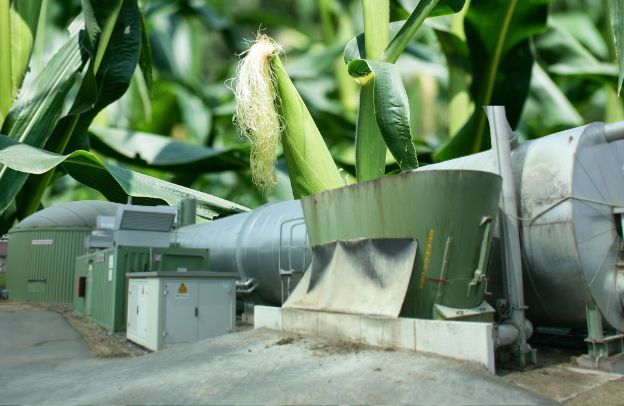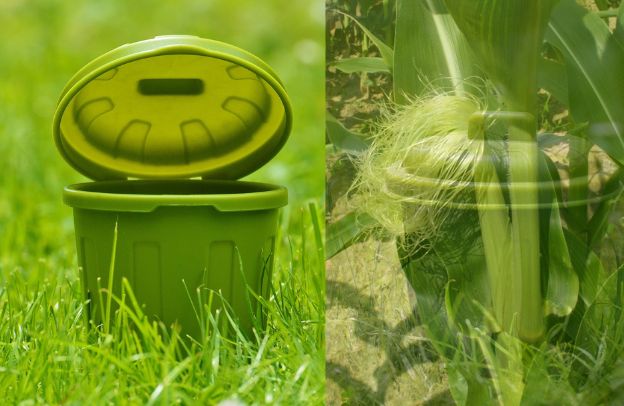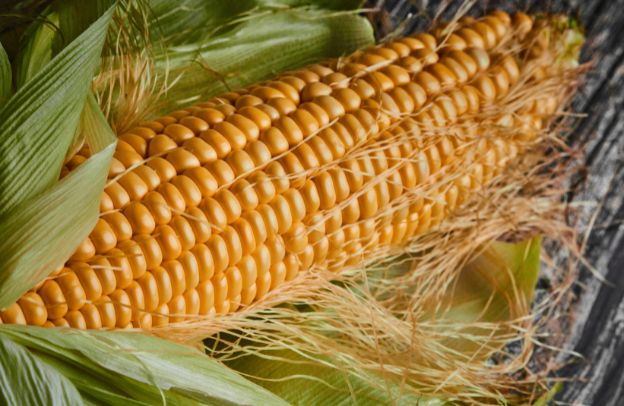Biogas Production: Harnessing the Power of Maize to Transform Agriculture and Agribusiness

Have you noticed it yet? The agriculture’s green revolution is here: biogas production isn’t just about managing waste anymore—it’s become a climate hero. With the capability to reduce greenhouse gas emissions by up to 30%, biogas is making significant strides toward combating climate change. And that is particularly appealing to the African agribusiness industry.
Want to learn more about storytelling? Start by downloading the first chapter of The Storytelling Mastery.
How does it work? Well, the process transforms organic waste into valuable biogas, providing a sustainable energy source and reducing reliance on fossil fuels. The benefits don’t stop there.
Biogas production also yields a nutrient-rich byproduct known as biol, which improves soil health and boosts crop yields by up to 20%. This natural fertilizer not only enhances agricultural productivity but also promotes sustainable farming practices.
Together, these advancements are paving the way for a greener and more sustainable future in agriculture and that is what we are going we are going to be considering in this article.
See also The Secret to Growing High-Yield Maize: Expert Tips and Tricks
The Promise of Biogas Production
According to the Food and Agriculture Organization (FAO), about 60% of sub-Saharan Africa’s population is engaged in agriculture, yet many farmers struggle to access reliable energy sources. That doesn’t sound the most interesting but that is the situation.
By harnessing the power of maize, one of Africa’s most widely grown crops, you can tap into biogas production to create sustainable energy while fostering economic opportunities for communities.
In a world where energy needs are constantly rising, and climate change poses an ever-looming threat, the shift to renewable energy sources has never been more critical.
Biogas production not only provides a clean energy alternative but also helps reduce greenhouse gas emissions and creates nutrient-rich byproducts that can be used as fertilizers, fostering sustainable agricultural practices.
Understanding the Role of Maize
Maize, or corn, is a staple crop in Africa, with the continent producing about 38 million metric tons in 2020 alone, according to the U.S. Department of Agriculture (USDA). Its high energy content and wide availability make it an ideal feedstock for biogas production.
For African diaspora entrepreneurs who are interested in profiting from the continent’s rich agricultural potential, remember that Maize is relatively easy to grow, can thrive in various climates, and offers a cost-effective solution for energy generation.
By focusing on maize, you position yourself in a sector that not only addresses energy shortages but also contributes to local economies.
For example, a study by the African Development Bank (AfDB) highlights the potential for maize to become a key player in the African agribusiness landscape, stating that investing in maize-based value chains can significantly boost food security and economic development across the continent. Below are some of the advantages of biogas production:
- Energy Production: The most common use of biogas is for generating electricity and heat. By utilizing maize for biogas, you can create a renewable energy source that powers homes, businesses, and agricultural operations.
- Transportation: Biogas can also serve as a fuel for vehicles, reducing reliance on fossil fuels and minimizing carbon emissions. As transportation is a significant contributor to greenhouse gas emissions, this shift can lead to a cleaner environment.
- Cooking and Lighting: In many rural areas of Africa, access to clean energy for cooking and lighting is limited. By producing biogas from maize, you can provide a sustainable alternative to traditional fuels, enhancing the quality of life for many families.
- Agriculture: The byproduct of biogas production, known as “digestate”, is rich in nutrients and can be used as a natural fertilizer, reducing the need for synthetic fertilizers. This not only improves soil health but also cuts down transportation emissions associated with fertilizer distribution.
- Industrial Uses: Biogas can be utilized in various industrial processes, including brickmaking and textile production, providing an environmentally friendly energy source for businesses.
What is biogas?
Biogas is a renewable energy source produced from the anaerobic digestion of organic materials such as agricultural waste, manure, municipal waste, plant material, sewage, green waste, and food waste.
See also Cultivating Rice For The Production Of Biofuel
During this process, microorganisms break down the organic matter in the absence of oxygen, producing a mixture of gases—primarily methane and carbon dioxide. This biogas can be used as fuel for heating, electricity generation, and even as a vehicle fuel, making it a versatile and sustainable alternative to fossil fuels.
The byproduct of this process, called digestate, can be used as a high-quality fertilizer, contributing to sustainable agricultural practices. The following are the common use cases of biogas:
Waste Management:
Biogas production shines in reducing landfill waste by converting organic waste into useful energy. This process involves breaking down organic materials like food scraps, manure, and agricultural residues in an anaerobic environment.
The result is biogas, which can be used for various energy needs, and digestate, a nutrient-rich byproduct that can further benefit soil as a fertilizer.
This process not only reduces the volume of waste but also mitigates the release of methane, a potent greenhouse gas, into the atmosphere.
Cooking Fuel:
In regions where conventional fuels like LPG (Liquefied Petroleum Gas) are scarce or expensive, biogas can serve as an excellent alternative. Biogas stoves provide a clean-burning, efficient cooking solution that reduces indoor air pollution—a common issue with traditional biomass or charcoal cooking methods.
This makes daily life healthier and more sustainable, particularly in rural areas. It also contributes to energy security, as families can produce their own fuel from readily available organic waste.
Agricultural Boost:
The digestate produced during biogas production is rich in nutrients like nitrogen, phosphorus, and potassium—key ingredients for fertile soil. Farmers can use this natural fertilizer to enhance soil quality and improve crop yields, reducing reliance on chemical fertilizers.
See also Best Marketing Strategies for Small and Medium-Scale Farmers in African Agribusiness
This not only supports sustainable farming practices but also closes the loop in the agricultural ecosystem by returning valuable nutrients back to the soil.
So, biogas manages waste, cooks meals, and enriches the soil—three impactful ways to make life greener.
The Process of Biogas Production from Maize
Materials Needed
To embark on your biogas production journey, you’ll need a few key materials:
- Maize: The main ingredient, easily grown and processed.
- Water: Necessary for creating a slurry with the ground maize.
- Grinder or Hammer Mill: To grind the dried maize, increasing the surface area for anaerobic microorganisms.
- Anaerobic Digester: A sealed container where anaerobic fermentation occurs.
Step-by-Step Guide process
- Harvesting and Drying: Start by harvesting maize at the right time to ensure optimal energy content. Dry the harvested maize in the sun to reduce moisture levels, which is crucial for fermentation.
- Grinding: Use a grinder or hammer mill to create a fine powder or meal from the dried maize. This increases the surface area for microorganisms during fermentation.
- Mixing: Combine the maize powder with water in a ratio of 1:2 (maize to water) to create a slurry.
- Fermentation: Transfer the slurry to the anaerobic digester. Allow it to ferment for several days, during which microorganisms will break down the organic matter, producing methane gas.
- Gas Collection: Capture the methane gas generated in the digester, which can then be used as a renewable energy source for various applications.
- Utilizing Digestate: The remaining solid material can be used as a nutrient-rich fertilizer for crops, closing the loop in the production process.
The Importance of Collaboration
As an entrepreneur in the African diaspora, your journey into agribusiness is not just about personal success; it’s also about creating opportunities for collaboration and community development.
The African diaspora, estimated to be over 200 million people globally, holds immense potential for driving change in Africa’s agribusiness landscape. According to the African Union, the diaspora contributes approximately $66 billion annually to African economies, primarily through remittances.
See also Processing Cassava for Increased Profit: A Guide for Nigerian Farmers
Imagine the impact if you and your fellow diaspora entrepreneurs came together to invest in biogas production and sustainable agriculture. By pooling resources, sharing knowledge, and collaborating on projects, you can create innovative solutions that address both energy needs and food security challenges in African communities.
Building a Network through agribusiness imitative
Networking is crucial in agribusiness. Here are a few ways to foster collaboration within the African diaspora:
- Join or Form Agribusiness Networks: Connect with existing organizations or establish your own network to share best practices, resources, and opportunities. Our Diaspora Storytelling Series can be a good place to start.
- Participate in Forums and Conferences: Attend events focused on agribusiness and renewable energy to meet like-minded entrepreneurs and industry experts.
- Leverage Online Platforms: Use social media and professional networks to connect with others in the agribusiness sector. Platforms like LinkedIn and specialized agribusiness forums can help you find collaborators.
- Share Your Story: Your personal narrative can inspire others and attract potential partners. Share your journey, challenges, and successes to build trust and credibility within the community.
Overcoming Challenges
While the potential for biogas production from maize is significant, you may face challenges along the way. Here are some common hurdles and strategies to overcome them:
- Initial Capital Investment: Setting up a biogas production system can require a substantial initial investment. Explore financing options, such as grants, loans, and crowdfunding, to support your venture. Organizations like the African Development Bank and the International Fund for Agricultural Development often provide financial assistance for agribusiness initiatives.
- Technical Knowledge: Understanding the technical aspects of biogas production is crucial for success. Invest in training and capacity-building programs to enhance your skills and knowledge. Look for workshops, online courses, and mentorship opportunities within the diaspora community.
- Market Access: Establishing a market for biogas products may take time. Build relationships with local businesses, government agencies, and NGOs to create demand for your renewable energy and fertilizer products. Collaborating with others can help you identify potential customers and distribution channels.
- Regulatory Compliance: Familiarize yourself with local regulations and standards related to biogas production and agricultural practices. Engage with local authorities to ensure compliance and advocate supportive policies that facilitate biogas development.
Conclusion: A Vision for the Future
As you contemplate your role in the African agribusiness landscape, remember that your journey is not just about personal success. It’s about contributing to a larger movement—one that seeks to address energy needs, improve food security, and foster economic development within African communities.
By harnessing the power of maize for biogas production, you have the opportunity to create a sustainable business model that not only benefits you but also uplifts your community.
See also The Secret to Growing High-Yield Maize: Expert Tips and Tricks
The African diaspora holds immense potential for transforming agriculture through collaboration and innovation. By sharing knowledge, resources, and stories, you can collectively drive the agribusiness revolution needed to meet the challenges of today and tomorrow.
Together, you can harness the power of maize and biogas production to create a brighter, more sustainable future for all.
Want to learn more about storytelling? Start by downloading the first chapter of The Storytelling Mastery.






